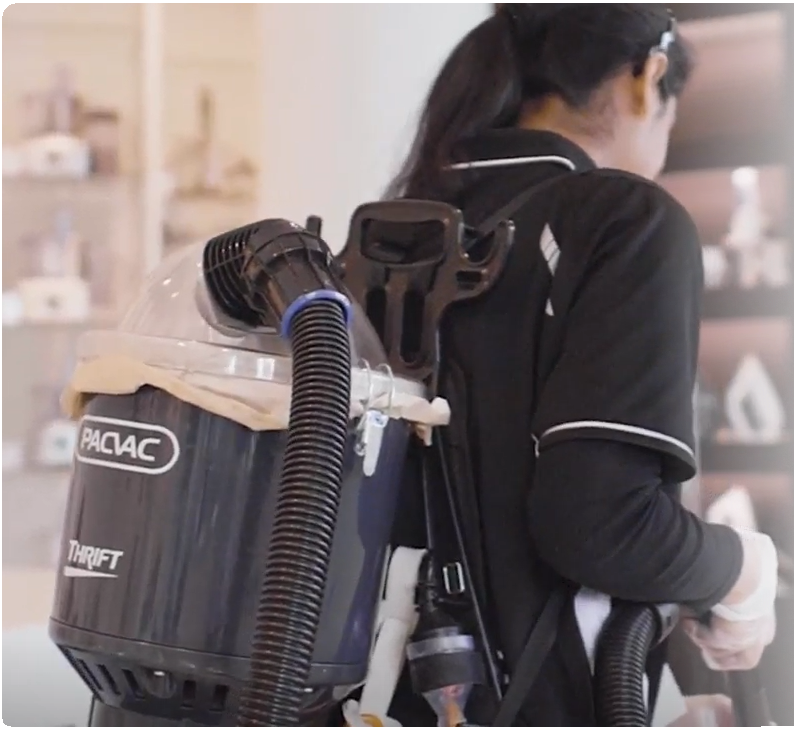Hay Fever in the Workplace: How Pro Cleaning Reduces Allergens and Sick Days
- Zachary Jones
- Aug 13
- 4 min read

Springtime in New Zealand: Great for the Garden, Not Always for the Office
While the days get longer and the kōwhai flowers bloom, many workplaces experience a less-celebrated seasonal shift: the rise of hay fever in the workplace. Instead of powering through their to-do lists, staff find themselves reaching for tissues, battling itchy eyes, or working at half speed.
The culprit isn’t just the great outdoors - pollen and other allergens love to sneak inside through doors, windows, and even air-conditioning systems. Left unchecked, they settle into carpets, upholstery, and every high ledge you forgot existed.
At Kiwi Commercial Cleaning, we help NZ businesses tackle spring allergens with evidence-based cleaning routines that protect productivity and wellbeing, without turning the office into a construction site. Here’s why it matters, and what works.
The Business Impact of Hay Fever in the Workplace
Productivity & Absenteeism
Allergic rhinitis (hay fever’s official name) is more than an inconvenience. Symptoms like fatigue, watery eyes, and brain fog can quietly drain hours of productive work, even if staff soldier on. The result? Fewer sick days, but more “presenteeism” where employees are present but not performing at their best.
Customer & Staff Experience
In client-facing industries, a sniffling receptionist or a meeting room full of coughs isn’t exactly brand-enhancing. A healthier workplace creates a better experience for everyone, including customers who may also be allergy prone.
Health, Safety & Duty of Care
While WorkSafe NZ doesn’t require businesses to pollen-proof their offices, it does expect employers to provide a safe and healthy workplace. Minimising airborne irritants supports that obligation, and signals you take staff wellbeing seriously.
Brand & ESG Signals
A clean, healthy workplace fits neatly with corporate social responsibility goals and can help attract and retain quality staff. People want to work (and stay) where they feel looked after.
Pollen, Dust & Hidden Irritants in Modern Offices
Pollen Entry Points
Spring breezes through open windows may feel refreshing, but they bring pollen directly to your desks. Even with closed windows, particles can ride in via HVAC systems or hitchhike on clothing.
Dust Control in the Office
Dust is more than “a bit untidy” - it’s a mix of skin cells, dust mites, fibres, and toner particles. It tends to collect where cleaning is infrequent: tops of cupboards, vents, blinds, and behind equipment.
Soft Furnishings & Carpets
Carpets, rugs, and fabric-covered furniture act as allergen reservoirs. Without regular deep cleaning, they release particles back into the air every time someone walks past or sits down.
Moisture & Mould Spores
Even minor moisture in kitchens, bathrooms, or around window
s can trigger mould growth — another common irritant.
Scented Products & Sensitivities
Fragranced cleaning products and air fresheners can irritate sensitive noses. A well-managed fragrance policy avoids unnecessary discomfort.
Office Cleaning for Allergies: What Works
HEPA-Filtered Vacuuming
HEPA (high efficiency particulate air) filters trap fine particles instead of recirculating them into the air. They’re essential for allergy control, and employed by all of our cleaning teams.

Microfibre & Damp Dusting
Microfibre cloths, used slightly damp, capture dust rather than sending it airborne. Correct colour-coding prevents cross-contamination between areas.
Scheduled Carpet & Upholstery Cleaning
Hot water extraction or low-moisture methods lift allergens from deep in the fibres. Proper drying prevents mould growth.
Hard Floor Detailing
Regular cleaning of edges, corners, and under desks stops dust build-up. Entry mats get particular attention to trap dirt before it spreads.
High & Low Zones
From tops of light fittings to the undersides of desks, allergens hide where you least expect them. We plan cleaning schedules to include both.
Low-Irritant Products
We use NZ-approved, low-residue cleaning agents, with Safety Data Sheets (SDS) always on file for transparency.
Get a Spring-Ready Allergen Reduction Plan
Spring is here. Pollen counts are rising. The question is, will your workplace ride it out, or get ahead of it?
Why Kiwi Commercial Cleaning
Local Teams, National Standards: Experienced franchise operators who know your area, backed by centralised systems and national oversight.
Community First: Ongoing community support that embodies our Cleaning with Meaning mantra.
Evidence-Led Cleaning: Methods refined through continuous training and auditing, all backed by an operations team with decades of experience.
Security & Reliability: Vetted staff, flexible scheduling and unparalleled standards of service.
FAQs on Hay Fever in the Workplace
Do HEPA vacuums really help? Yes - when properly maintained, they capture allergens that standard vacuums would recirculate.
How often should carpets be cleaned in spring? Every 6–12 months, with more frequent vacuuming during pollen season.
Can cleaning make allergies worse? Unfortunately, yes. If done with the wrong tools or methods, improper cleaning can exacerbate allergies through ‘dust resuspension’ .We are sure to use scientifically backed methods and HEPA vacuums to avoid stirring allergens up.
Breathe Easier This Spring
Reducing hay fever in the workplace isn’t just about comfort - it’s about creating a healthier, more productive, and more enjoyable environment for everyone. With the right cleaning approach, you can cut allergens, protect your team’s wellbeing, and keep your workplace looking and feeling fresh all season.
Call us now or visit our website to discover more about our industry leading cleaning service, and take the first step to a healthier office this spring!




Comments